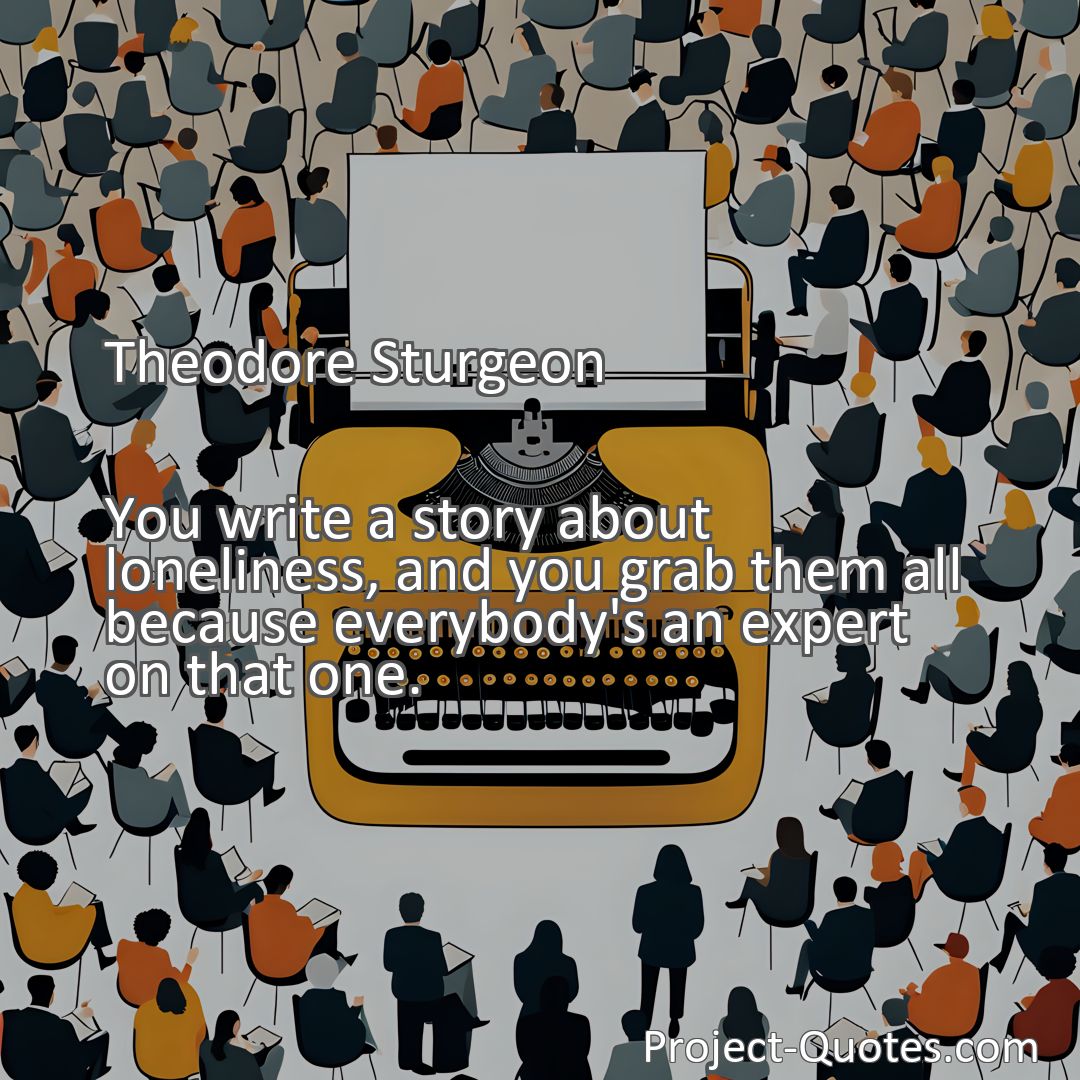You write a story about loneliness, and you grab them all because everybody’s an expert on that one.
Theodore Sturgeon
The Power of Loneliness: Exploring Stories for Connection and Understanding Loneliness is a universal emotion that we all experience, regardless of age, gender, or culture. Stories about loneliness captivate us because they provide a way to connect and understand the experiences of others. Through literature, poetry, and other creative mediums, we can navigate our own journeys of self-discovery and empathy, finding comfort and hope in the shared human experience.
Table of Contents
Meaning of Quote – You write a story about loneliness, and you grab them all because everybody’s an expert on that one.
Loneliness – a feeling that everyone has experienced at some point in their lives. It is a universal emotion that transcends age, gender, and cultural boundaries. Whether it’s the empty echo of a quiet room or the ache of being surrounded by a crowd yet feeling utterly alone, loneliness is a sentiment that resonates within each of us. It is no wonder, then, that when we encounter a story about loneliness, we are captivated by its premise and eager to delve into its narrative.
As humans, we possess an innate curiosity about the human experience. We long to connect, to understand, and to find solace in the stories of others. Loneliness, being a common thread that binds us, becomes an accessible theme for storytelling. By exploring this complex emotion, authors have the power to touch the hearts of readers young and old, allowing them to feel seen and understood.
In the realm of literature, stories about loneliness abound. They serve as mirrors reflecting our deepest fears and desires. As we read these narratives, we see fragments of ourselves in the characters, recognizing the struggles and triumphs they face. The portrayal of loneliness in literature provides a lens through which we can navigate our own journeys of self-discovery and empathy.
For 7th grade students, encountering stories about loneliness can be particularly impactful. Adolescence is a time when young individuals are often grappling with their own sense of identity and belonging. The experiences they face during this transitional phase can be both exhilarating and isolating. Thus, reading stories that tackle loneliness can serve as a guiding light, offering a roadmap for self-reflection and instilling a sense of hope for a brighter future.
One such story that delves into the complexities of loneliness is “The Catcher in the Rye” by J.D. Salinger. This classic novel follows the introspective journey of Holden Caulfield, a troubled teenager who struggles with feelings of isolation and alienation. As readers embark on this literary odyssey, they find solace in the fact that they are not alone in their struggles. Holden’s raw and honest narration invites empathy and allows readers to explore the depths of their own emotions.
In addition to novels, short stories can provide valuable insights into the realm of loneliness. Take, for instance, the renowned tale “The Tell-Tale Heart” by Edgar Allan Poe. This chilling narrative follows an unnamed narrator plagued by their own guilt and torment. As the reader is drawn into the mind of the protagonist, they begin to understand the irrationality that can emerge from a desperate longing to escape loneliness. Through Poe’s masterful storytelling, one is reminded of the destructive power of isolating oneself from society.
Loneliness also permeates the realm of poetry, offering a succinct yet poignant exploration of this universal emotion. In Emily Dickinson’s poem “I’m Nobody! Who are you?” she introduces the idea of the outsider, someone who chooses to distance themselves from the world. Through her witty and thought-provoking verses, Dickinson invites readers to reconsider the stigma associated with loneliness. By reframing it as a choice rather than a fate, she challenges readers to embrace their own uniqueness and find solace in their individuality.
While the written word is undoubtedly powerful, it is not the only medium through which stories of loneliness are conveyed. Film and television also provide platforms for exploring this intricate emotion. One such example is the critically acclaimed animated film “Inside Out,” which uses anthropomorphized emotions to navigate the psychological landscape of a young girl named Riley. By personifying loneliness as a character named Bing Bong, the film highlights the profound impact of isolation on one’s mental well-being, while ultimately prioritizing the importance of human connections.
In conclusion, stories about loneliness have a profound impact on readers of all ages. They serve as a reminder that we are not alone in our struggles and that the human experience, though complex, is ultimately shared. By exploring the multitudes of loneliness through literature, poetry, and other creative mediums, we gain a deeper understanding of ourselves and of others. These stories provide comfort, inspire empathy, and offer hope for those seeking connection in a world that can sometimes feel overwhelmingly solitary. So, let us continue to tell and seek out these narratives, for with each story shared, we come one step closer to bridging the gaps between us and realizing that loneliness, like all human experiences, can be transformed into collective strength.
I hope this quote inspired image brings you hope and peace. Share it with someone who needs it today!


